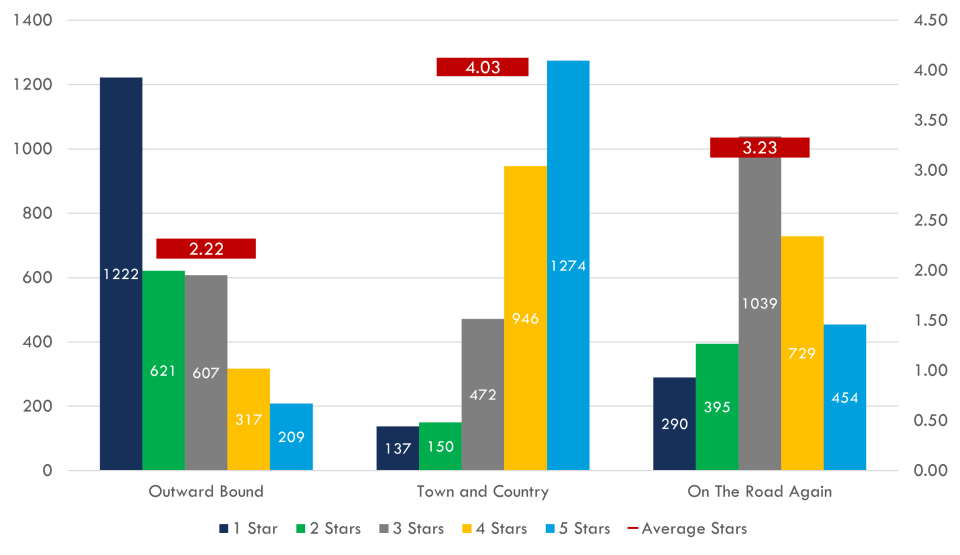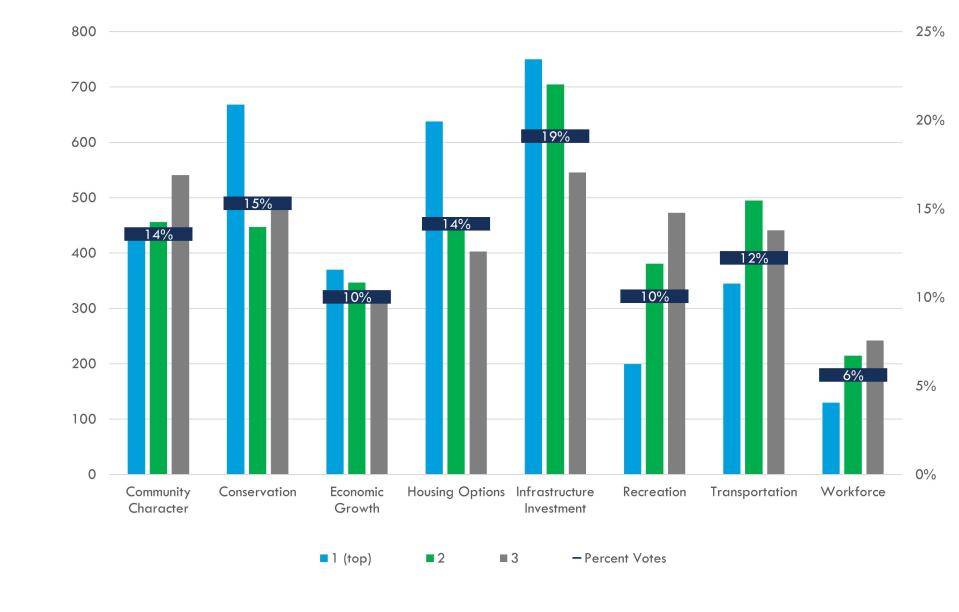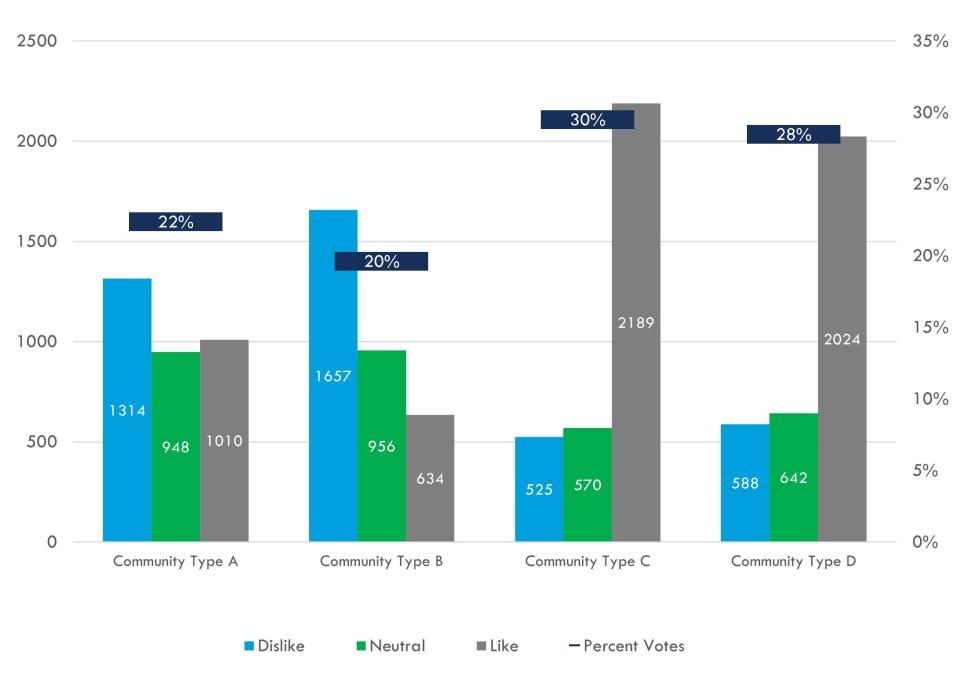Thousands weighed in on what they'd like Knox County to look like. Here are the trends
For the first time in two decades, Knox County is trying to update its land use and development plan. Resident input plays a huge role.
And the number of people who have stepped up to express what they'd like the county to look like has jumped in recent weeks.
The project's first round of public input saw only 436 participants, but that increased by nearly 800% as 3,905 people chose to participate in the second round. Most used an online survey to weigh in on trouble spots, wish list items and their vision for an ideal county.
The Advance Knox initiative will creating a new long-term plan that determines everything from types of homes that are built to where infrastructure investments are made. And public participation is key in making sure the right plan gets adopted.
Almost 80,000 people are coming:Knox County isn't ready for 79,000 new residents: 'We will not maintain the status quo'
Want to keep up with Advance Knox?:Subscribe to the free, daily Knox.biz newsletter
Here's a look at what rose to the surface in the latest round of public input in the Round Two Summary Memo.
Clustered developments were well received

During meetings, the public was asked to give a rating (from one to five stars) to three development scenarios. Each scenario outlined how the county would grow if a certain plan was adopted.
The scenarios were:
The "outward bound" or "status quo" scenario outlines what the county would look like if long-term planning didn't change much and development continued as it has for many years.
The "town and country" scenario predicts what the county would look like if future development happened in clusters like the Northshore Town Center planned community.
The "on the road again" scenario would emphasize supporting development along roads and corridors that have existing infrastructure to support that investment.
Town and country was the most popular, receiving an average of four stars from participants. On the road again received 3.2 stars, and outward bound received 2.2.
In other words, county residents are ready for change.
Participants said they liked how the town and country scenario allowed for more walkable areas and kept rural areas truly rural. However, the biggest concerns were that it may overcrowd already crowded areas and may not help with affordability.
Infrastructure was top dog

Each development scenario was evaluated on how it ranked among eight criteria:
Community character: creating and maintaining areas with distinct identities
Conservation: preserving natural resources and areas
Infrastructure investment: making strategic, efficient and fiscally responsible infrastructure investments
Economic growth: creating and keeping a strong local economy
Workforce: creating opportunities to grow county jobs
Housing options: being able to provide enough variety of places to live
Transportation: creating and maintaining strong public transportation
Recreation: creating and maintaining connected greenways, sidewalks and parks
Participants also were asked to rank their top three criteria, or goals, depending on how important they were to them.
Of the 3,510 responses received, infrastructure investments received the most overall votes, and about 23% of the first place votes.
Conservation was found to be the second most important goal, with about 19% of first place votes. In an area with so much natural beauty, that makes sense.
Housing options came in third, with about 18% of first place votes.
Creating job opportunities received the least amount of overall votes and just 3% of first place votes.
Positive reaction to mixed-use communities

After responding so positively to a clustered development plan, it's no shock that participants were generally in favor of mixed-use housing types with high densities.
Participants were asked to vote on whether they liked, disliked or were neutral on four different housing developments:
Single-family subdivisions (community type A)
Apartment buildings (community type B)
A mix of single-family and apartments (community type C)
Mixed-use centers with housing and businesses integrated (community type D)
Comments on the clustered housing development showed participants liked the walkability these communities would provide, as well as the diversity in people and businesses they would bring.
Participants thought the single-family subdivisions and apartment complexes would help with affordability, but didn't like how it wouldn't conserve land and could make the county lose its rural feel.
Participant demographics are pretty much the same as first round
While far more people participated in Advance Knox's second round of public input, the types of people who gave feedback remained pretty similar to the first round.
However, they don't accurately represent the real demographics of Knox County.
The majority of participants were white, over the age of 45 and well-educated, with 51% living in a household that made over $100,000 a year. Households with an income of $50,000-$100,000 per year, accounted for 34% of participants. The median household income in Knox County in 2021 was $62,911, according to U.S. Census data.
Of the the participants, 91% identified as white, 2% as Black, 1% as Asian and 3% as two or more races. These percentages don't compare one-to-one with Knox County's overall demographics, where 86% identify as white, 4% as Black, 2% as Asian, and 6% as two or more.
While 25- to 34-year-olds and 35-to 44-year-olds made up the two largest percentages, 21% and 23% respectively, about half of participants were over the age of 45.
To view the entire report, get updates on the Advance Knox initiative and participate, visit advanceknox.org.
About Advance Knox
County residents had the entire month of October to submit feedback and participate in the Round Two process, and here's how they did it.
134 people attended open houses
130 people attended the virtual open house
231 people participated in meetings in a box
3,410 people submitted input online
About 89% of people did not participate in the first round of public input, according to the memo.
The feedback from this round of input will be used to create a "preferred scenario" which will blend elements of the three scenarios shown at the meeting.
To view the entire report, get updates on the Advance Knox initiative and participate, visit advanceknox.org.
Silas Sloan covers growth and development in East Tennessee for Knox News. He can be reached at silas.sloan@knoxnews.com. You can follow his work on Twitter @silasloan, or on Instagram @knox.growth. and sign up for the free, weekly Urban Knoxville newsletter. Unlock premium perks and support strong local journalism at knoxnews.com/subscribe.
This article originally appeared on Knoxville News Sentinel: Takeaways from Advance Knox's second round of public input
